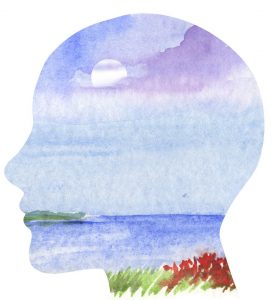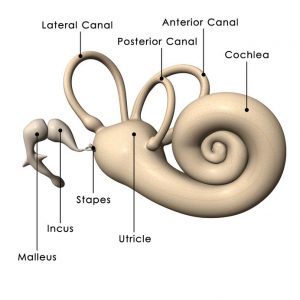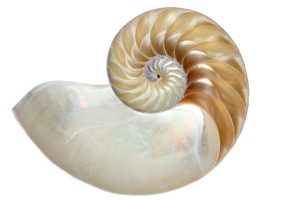What is a DO?
Graduates of osteopathic medical school earn the degree Doctor of Osteopathic Medicine, abbreviated DO. While osteopathy is a separate and distinct branch of medicine, DOs complete the same medical and surgical training as medical doctors (MDs) and therefore enjoy the full rights and privileges of all physicians and surgeons (for more information, click here).
While maintaining the same rigorous training of conventional medical school, osteopathic students receive additional training in palpatory diagnosis and treatment. The body’s complex system of bones and soft tissues, known as the musculoskeletal system, interrelates with the functions of the whole body in health and illness. Osteopathic students begin with the study of normal anatomy and physiology in order to recognize abnormal structure and function as the precursors or manifestations of disease.
Along with this training comes the understanding of the human being as an integrated unit of function: mind, body and spirit (Philosophy and Mechanical Principles of Osteopathy, Still, 1892). Students learn to take a detailed patient history since habits, family history and life events can interfere with the full expression of health and set disease processes in motion. Through this expanded study of anatomy and physiology and emphasis on listening and observation, students learn perceptual and palpatory skills in order to develop hands-on techniques which influence and optimize function and correct structural abnormalities.
Osteopathy: A Living Science
Osteopathy is a living science that continues to evolve. Osteopathic physicians are continually developing new techniques and approaches to patient care. This ongoing study is founded on the understanding that the human being functions as a whole and that the body, mind, and spirit are interrelated in health and disease. Health is perceived as a dynamic process, continually changing and evolving. When this process comes out of balance with the whole, disease will result.
Founded in 1874 by Dr. Andrew Taylor Still in order to re-enliven the practice of medicine, osteopathy looks closely at the relationship between form and function. Through in-depth study of anatomy and physiology and the natural laws that underlie them, osteopathy seeks to understand not merely the manifestations of disease, but also its cause.
Osteopaths acquire an intimate, palpatory knowledge of normal anatomy and physiology in order to recognize the origins of disease. We apply this hands-on knowledge in addition to conventional medical knowledge to treat all medical conditions, using gentle techniques that cooperate with the body’s innate wisdom and capacity to heal. Because the laws of living systems are expressed throughout the natural world, osteopathic physicians learn by observing and experiencing nature.
“… the cerebrospinal fluid is one of the highest known elements that is contained in the body… this great river of life must be tapped and the withering fields irrigated at once or the harvest of health will be lost forever.”
–A.T. Still, The Philosophy and Mechanical Principles of Osteopathy, 1902
Cranial Osteopathy
In the early 1900s, Dr. William Garner Sutherland D.O. applied osteopathic concepts to the anatomy and physiology of the skull and central nervous system. He called this study “Osteopathy in the Cranial Field” and saw it as a continuation and extension of the science of osteopathy.
While studying a disarticulated skull during his education at the American School of Osteopathy in 1899, Dr. Sutherland had a thought which struck him, that the bones of the skull were designed for movement:
“…bevelled like the gills of a fish, indicating articular mobility for a respiratory mechanism.”
During the 30 years of extensive study and research which ensued, Dr. Sutherland discovered that the bones of the skull do indeed move, and that they move in coordination with an inherent, alternating expansion and contraction of the central nervous system. He named this phenomenon the Primary Respiratory Mechanism because it drives all functions of the body and is the foundation for metabolism (for more details, click here).
Modern science acknowledges that the nervous system, now often referred to as the neuroendocrine-immune system, plays a major role in regulating metabolism, digestion, and immune function. Extending from the head to the tailbone, the nervous system branches out throughout the body to guide and orchestrate its functions. Scientists now understand that this guiding wisdom functions as a whole, integrating the various organ systems of the body in one gesture.
The Primary Respiratory Mechanism is a living system- breathing, fluctuating and responding to its environment. The cranial osteopath learns to access and engage this fluid perceptual field with its associated rates and rhythms. In addition to treating injuries of the head, brain, and spinal cord, cranial osteopathy helps the patient adapt to and recover from stress, achieve and maintain homeostasis, and build a functional reserve.
“Where is the cerebrospinal fluid? Is it only in my body? No. It is in each and every one of your bodies. There is an ocean of cerebrospinal fluid in this room.”
-W.G. Sutherland DO, Teachings in the Science of Osteopathy
A Biodynamic Approach
A Biodynamic Approach to Osteopathy in the Cranial Field (BOCF) was developed by Dr. James Jealous D.O. in the 1980s as a continuation and renewal of osteopathy. Inspired by Sutherland’s discovery of Primary Respiration, Dr. Jealous applied this new knowledge and understanding to the study of human growth and development (see article). Through the work of embryologist Erich Blechschmidt (whose use of the term “biodynamic” in describing embryological growth forces led to its use by Dr. Jealous), Dr. Jealous found further scientific evidence that organizational forces and fluid motion in and around the human embryo create living form and precede structure. This led him to an understanding of the embryo as an archetype of perfect form, and to the discovery that the forces of embryogenesis are the same forces of healing and regeneration that occur throughout life.
Over the last three decades, Dr. Jealous and his students have continued this study through research, practice, and experiences in the natural world (read interview). Osteopaths skilled in this practice have completed several years of training through intensive course work and clinical practice (for a list of trained physicians in your area, click here). Like all traditional osteopathy, BOCF is primarily learned by apprenticeship, with teacher and student working one-on-one with patients in a clinical setting.
The movement of creation can be observed in all living forms. This phenomenological approach to science is at the heart of osteopathy. Indeed, it offers a renewal for all modern science.
“To find health should be the object of the doctor. Anyone can find disease.
-A.T. Still, 1899







